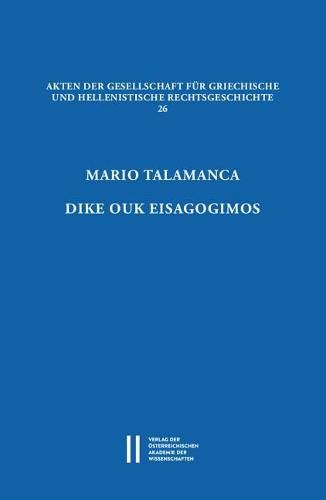Readings Newsletter
Become a Readings Member to make your shopping experience even easier.
Sign in or sign up for free!
You’re not far away from qualifying for FREE standard shipping within Australia
You’ve qualified for FREE standard shipping within Australia
The cart is loading…






English summary: After the democratic restoration in 403 BC a defendant was allowed to oppose a statement (paragraphe) that the case could not be brought to trial on formal grounds. Some scholars believe that the formal question was decided by the court as a separate preliminary case; for other scholars the two questions - the formal one and the material one - were considered together: if the paragraphe was defeated, the jurors passed directly to a vote on the case itself. The author discusses carefully the various opinions on the subject and presents his own solution, based on a cautious analysis of the ancient sources: in a single vote the jurors decided if the defendant’s paragraphe or the plaintiff’s plaint was winning the case. Italian description: Dopo la restaurazione democratica del 403 a. C. al convenuto era permesso, oltre che difendersi nel merito, opporre l'inammissibilita dell'azione mediante paragraphe. Se il tribunale accoglieva la paragraphe e dichiarava l'azione inammissibile, il processo era terminato. Se invece respingeva la paragraphe, si discute se la causa nel merito fosse discussa nell'ambito del medesimo processo o se si aprisse un nuovo processo. L'autore presenta un'approfondita discussione delle varie opinioni in proposito e presenta una propria soluzione basata su un'accurata analisi delle fonti antiche: con una sola votazione i giudici sceglievano se accogliere la paragraphe o se assegnare la vittoria all'attore.
$9.00 standard shipping within Australia
FREE standard shipping within Australia for orders over $100.00
Express & International shipping calculated at checkout
English summary: After the democratic restoration in 403 BC a defendant was allowed to oppose a statement (paragraphe) that the case could not be brought to trial on formal grounds. Some scholars believe that the formal question was decided by the court as a separate preliminary case; for other scholars the two questions - the formal one and the material one - were considered together: if the paragraphe was defeated, the jurors passed directly to a vote on the case itself. The author discusses carefully the various opinions on the subject and presents his own solution, based on a cautious analysis of the ancient sources: in a single vote the jurors decided if the defendant’s paragraphe or the plaintiff’s plaint was winning the case. Italian description: Dopo la restaurazione democratica del 403 a. C. al convenuto era permesso, oltre che difendersi nel merito, opporre l'inammissibilita dell'azione mediante paragraphe. Se il tribunale accoglieva la paragraphe e dichiarava l'azione inammissibile, il processo era terminato. Se invece respingeva la paragraphe, si discute se la causa nel merito fosse discussa nell'ambito del medesimo processo o se si aprisse un nuovo processo. L'autore presenta un'approfondita discussione delle varie opinioni in proposito e presenta una propria soluzione basata su un'accurata analisi delle fonti antiche: con una sola votazione i giudici sceglievano se accogliere la paragraphe o se assegnare la vittoria all'attore.